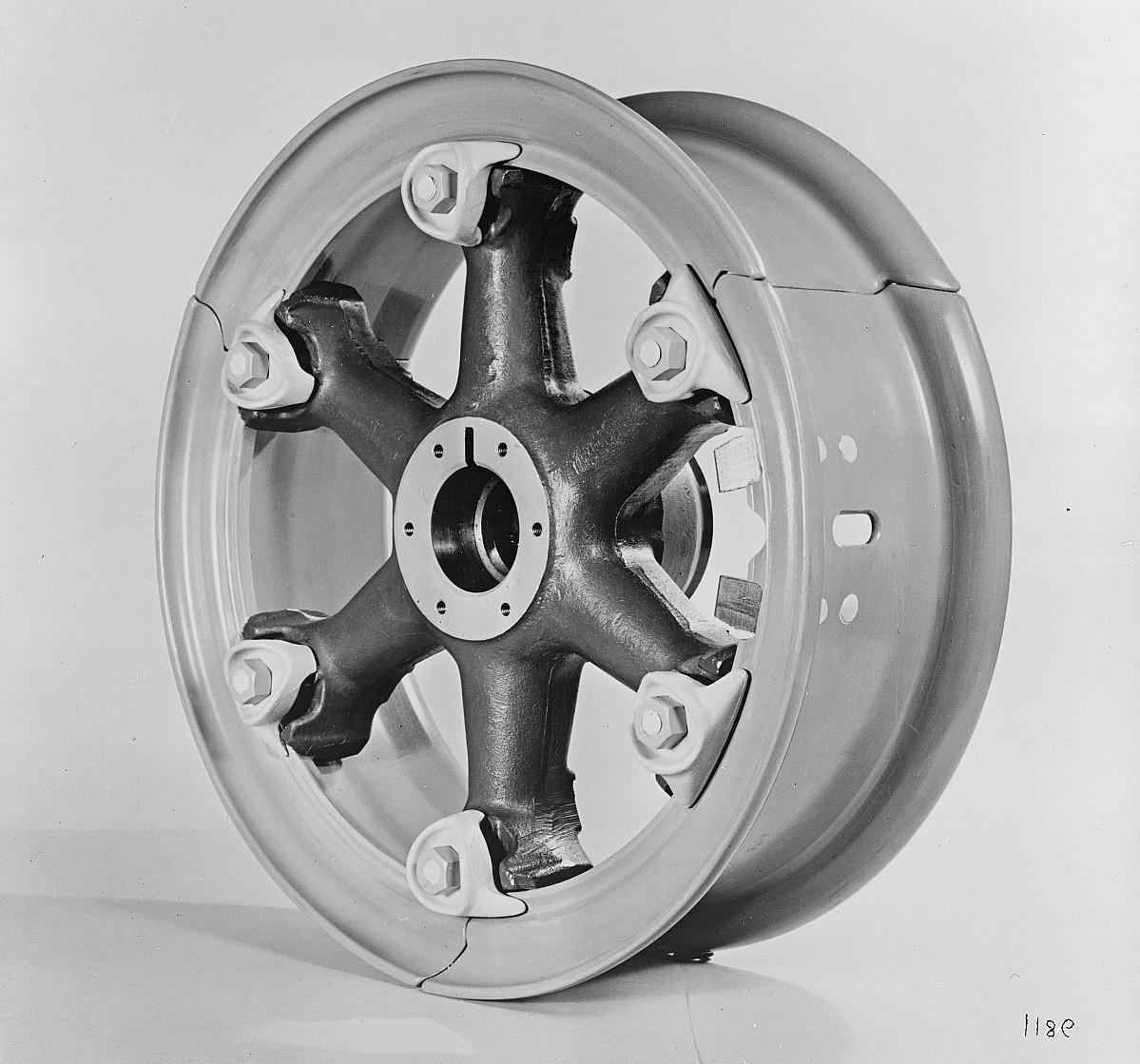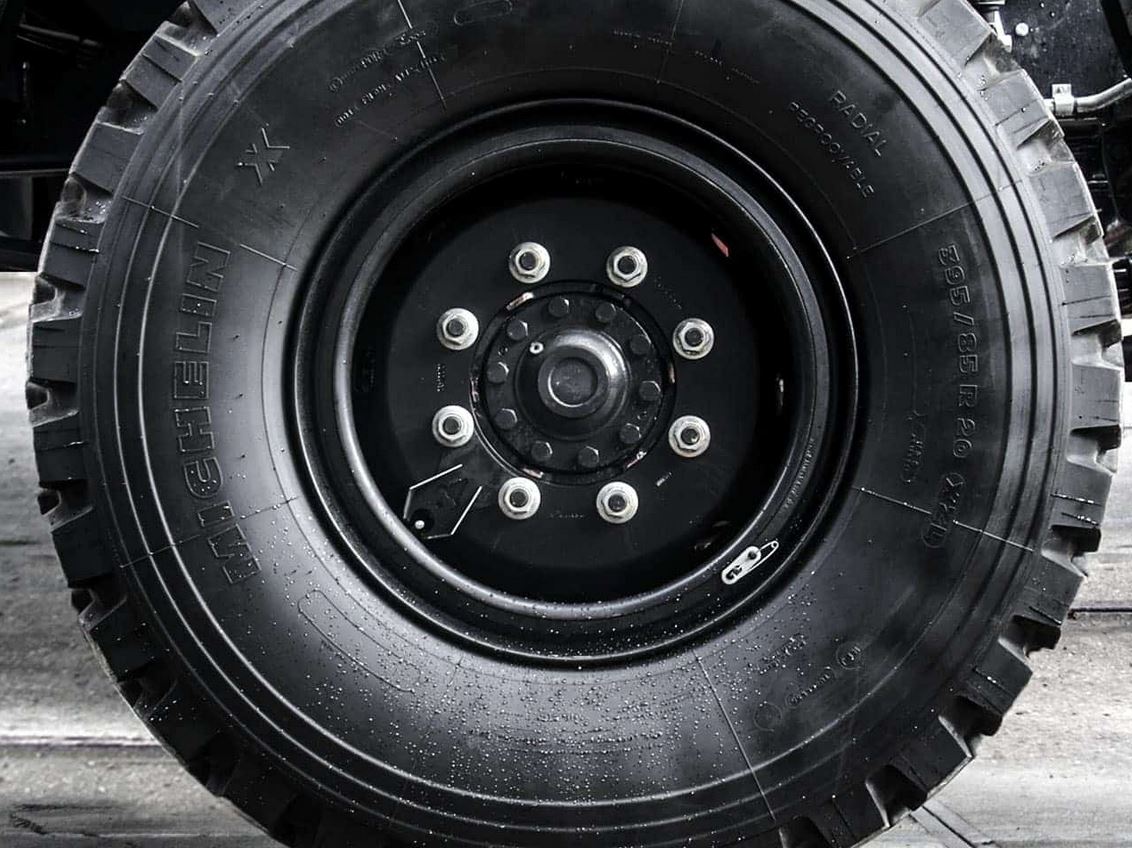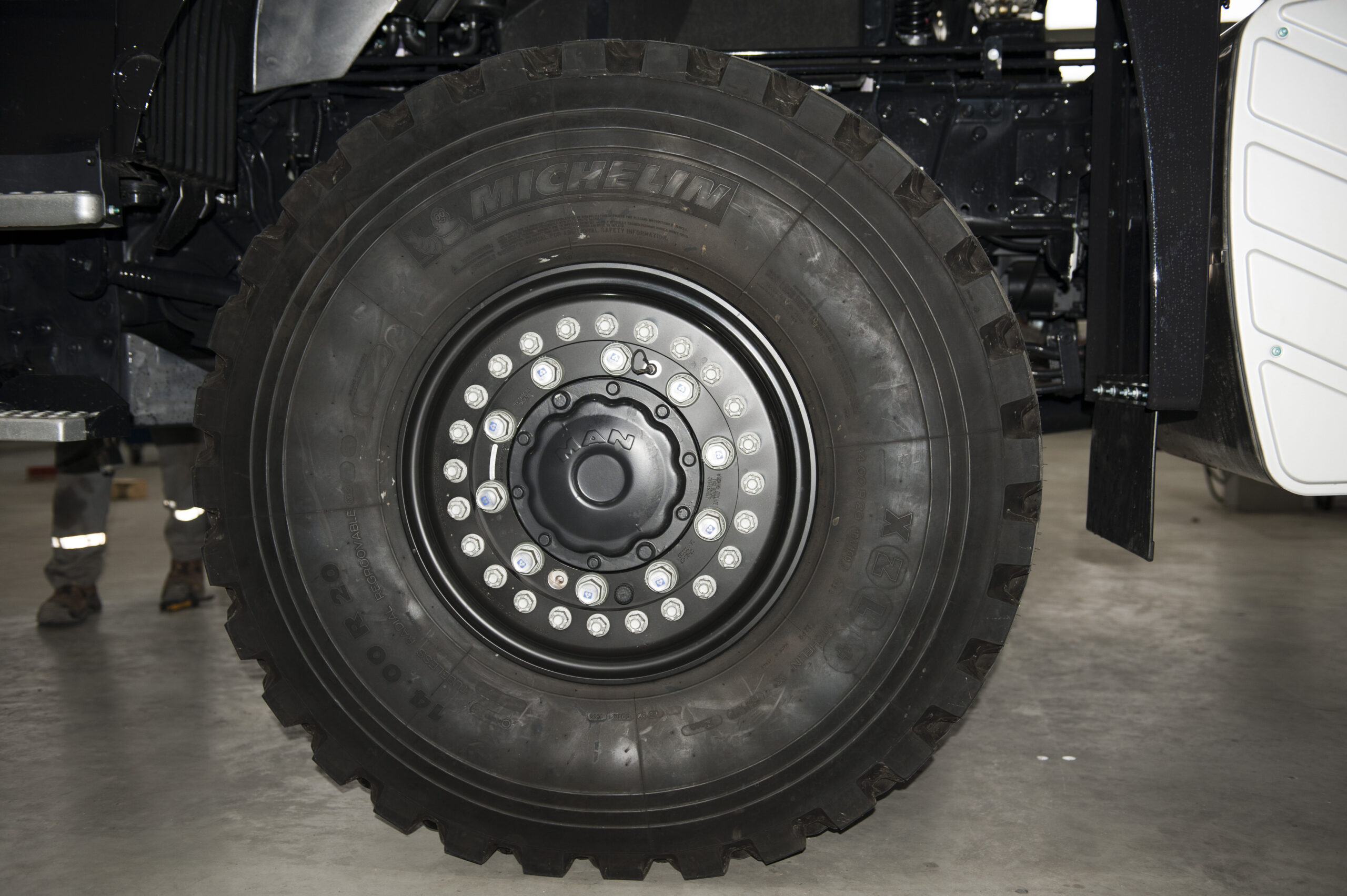In our «Diesel Talks» there is always a discussion about the rim size. Most colleagues have chosen the optimal rims for their needs. I’m trying to show the advantages and disadvantages of the two possible rim sizes in a reasonably neutral manner.
Rim types
Today, one-piece rims in aluminum or steel are mainly installed on trucks. In the past, multi-part rims were often used so that the tires could be assembled and disassembled more easily. With today’s material this is no longer necessary. Our long-term motorhomes are often built on older trucks, so here is a small outline of multi-part rims.

The Trilex rim was developed by Georg-Fischer (GF). As the name suggests, the rim is in three parts. The rim must be split radially for tire mounting. The advantage is that the tire can be changed on site without mechanical help. Assembly instructions can still be found in the +GF+ online archive.

Later, mostly snap ring rims were installed. Snap ring rims are also multi-part rims so that the tire can be mounted more easily. In contrast to the Trilex rim, the snap ring rim is disassembled axially. Herman en route has posted a very detailed guide to assembling snap ring rims.

Hutchinson Felgen
The beadlock rim is a two-piece rim that is also axially disassembled. We drive with one ourselves. The support ring clamps the tire and the rim against each other, so that the tire cannot slip through or even slip off the rim when the tire pressure is low. This is very advantageous for mud and sand passages. Corresponding assembly instructions are available from Hellgeth.
With the one-piece rim, the hump prevents the tire from sliding off the rim in curves and with less air pressure.
22.5-inch rim
The world’s most built truck tires fit the 22.5-inch rim. This rim is therefore the most economical way to drive. Due to the larger rim, it is not possible to fit 100% tires, but 80% or 65% tires, i.e. tires with relatively low sidewalls. This also means that the carcass is correspondingly weaker than with 100% tires. There are only limited off-road tires on the market for this rim size. These rims were mainly developed for long-distance traffic and not for off-road use.
20-inch rim
Due to the smaller inner diameter, use is only possible with drum brakes that are sufficiently small in diameter, so it is not so easy to convert from a truck with 22.5-inch rims to 20-inches. Thanks to the smaller diameter, 100% tires can be fitted. Tires with 100% sidewalls on the 20-inch rims are roughly the same size as 85% tires on 22.5-inch rims. On the 20-inch rims there are tires with off-road tread in the format 14.00R20 or 16.00R20.
Conclusion
If a fully off-road capable vehicle is required, the 20-inch rim is the right choice. Many colleagues drive with construction site treads on their vehicles. They argue that they can reach their destination with construction site tires in almost all situations. The economy obviously speaks clearly for this type of tire. I take the view that if you buy an expensive vehicle with a lot of complex off-road technology, it makes no sense to save on tires in the end. All diff locks are of little use in mud with slicks.
Acknowledgments
I would like to thank the experts below. They kindly provided me with technical input.
- Karl Mauer, Toni Maurer GmbH & Co KG
- Ulrike Burkhart, Mercedes-Benz Trucks
- Christian Künzle, Nutzfahrzeuge Lachen


Do you have these rims in a 20”x 5”wide Dayton type wheels please let me know I’m looking for a set of 4 rims
Hi Bert
we use 14.00R20
With 20 inch rims and 14.00r20 tyres are you saying you can’t have disc brakes and must have drum brakes.
That’s right. We have drum brakes front and rear.